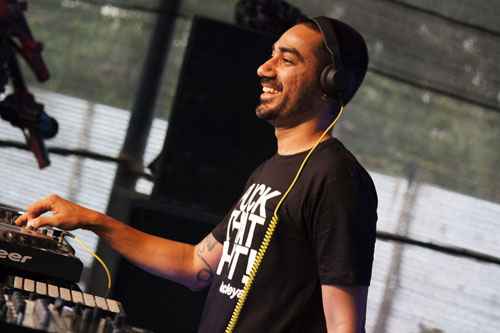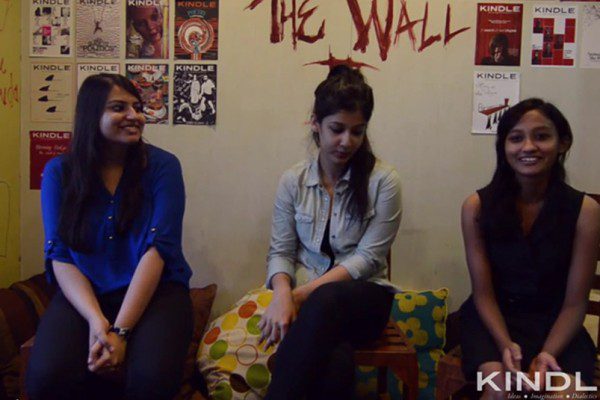You started off in the 1990s with the BandishProjekt and have today gone on to create a one man army called Nucleya. Could you tell us a bit about the journey?
When I was in school, my father bought me my first ever computer, and on that, I started making electronic music. With a few like-minded friends, I formed my first band BandishProjekt. Being part of a band, I was making one particular style of music for about 10 years. I wanted to explore and experiment with different genres and sounds. About five years ago, I started Nucleya, and with this moniker I started exploring different styles of music, and came across dubstep and instantly fell in love with it. I have major dubstep influences in my music, and I chose this genre because it has strong bass throughout, and simple half time drums.
From BandishProjekt to Nucleya, how has the Dubstep/Bass scene evolved in India?
There was a very small community of people who actually loved this style of music. For us in Ahmedabad, where we started our musical journey, the community was mostly our friends and their friends – all like-minded people. For them, this was the music, and they followed it very religiously. I remember, back in the day, when we organised our own gigs, it used to be this really amazing vibe. For each gig we burned CDs for the people to just take away for free. People took time to grasp what we were trying to do, but that also happens with any style of underground music.
You’ve played at many international festivals (Glastonbury, Edinburgh, Fringe, Lille, Electron etc,. ) and have been touring in India for the last month. Is the reception, the audience, the attitudes, any different between the two (international and national)?
Each venue is a different experience regardless of whether it’s in India or international. The response I get in Pune is so different as compared to the response I get in, say, Delhi. The same thing is applicable to all international gigs I have played so far. In some places the energy is very high, and in some places not so much. I have played some gigs where people preferred to just stand and listen to what I’m playing rather than dancing, which is amazing too.
I read somewhere about you talking of a ‘virtual music instrument’. Could you tell me more about it?
I’m not sure what the question is, but perhaps you want to know what virtual musical instruments I use when I produce music? What I usually do is that I create a virtual musical instrument using sound samples, which means that I will either record or sample music from different sources and align those samples I recorded on the right keys in a sampler. Doing this, I get a music instrument which could be played in two to three different octaves and has a sound of its own which is unlike anything in the market. My tracks Street Boy and Bangla Bass are fine examples of this.
What are the musical instruments you like to essentially work with? What are the different ‘flavours’ you then try to incorporate?
In terms of actual hardware, I only use a small MIDI keyboard. The magic happens inside the computer, where the instruments that the MIDI keyboard is triggering are those that I make from scratch. That’s why the synths I use are so different from others. As far as what I’m looking to incorporate in terms of sound in my music is concerned, it actually depends on what sort of a track I’m working on.
In your songs, you have collaborated with a number of artists, all from different parts of the country. Is the language barrier a hindrance? How do you overcome it?
It’s usually not a problem. Only when we can’t understand each other’s language at all do we face a bit of trouble, but it’s not so much of a problem, honestly. I remember I was recording with ChinnaPonnu at a studio in Chennai and we realised that she only speaks Tamil. It was a bit of a problem initially, but eventually it all worked for us – I would sing the melodies I had in mind to her, and she would spontaneously give words to my melodies and sing them back to me. We recorded four tracks that day in about 45 minutes.

Photo credit – Uday Shankera
Since most of your music is from the ‘streets’ how do you go about sourcing this kind of music?
I have some really talented south Indian friends who helped me understand this music, but mostly it’s all from the internet.
Which artists would you like to collaborate with in the future?
There are many – Benny Dayal, Vishal Dadlani, Papon. I also hope someday I’m able to make a track with MIA, and so many more.
What is your opinion on the indie music scene in India today? As in, is talent essentially the calling card or does a well-established background (contact. family, etc.) really matter?
Talent is essential. If you don’t have the talent, even with connections you can’t really go too far.
Could you tell us a little bit about the collaboration that happened with remixing music for Zindagi Na Milegi Dobara? And Bollywood in general?
It was very straight forward. They just sent me the vocal files and told me what sort of remix they wanted in terms of music style. But things are now slowly changing – I am now asked to produce music for films rather than just remix a song, which is definitely a step forward.
Why the Koocha Monster? Who is he?
In Hindi, streets are called ‘galikoocha’, so the word ‘koocha’ comes from there, and the word ‘monster’ comes from the sound of the bass. As far as the sound of the EP is concerned, the EP is a hybrid of many genres. I wanted to explore Indian street music and various sub genres of bass heavy music like Moombahton, trap, dubstep and reggae. I love sampling dialogues, news, and various other sounds in my music, so that’s there as well.
What does Nucleya mean? I mean, it’s not quite an ordinary word, so why call yourself that?
Nucleya was my email password when I was in school. I was looking for a name, and this was what occurred to me.
After a representation of Indian street attitudes, what next?
I have also already started working on my new album, which should be out February next year, and I plan to do a lot of new collaborations for the album.


